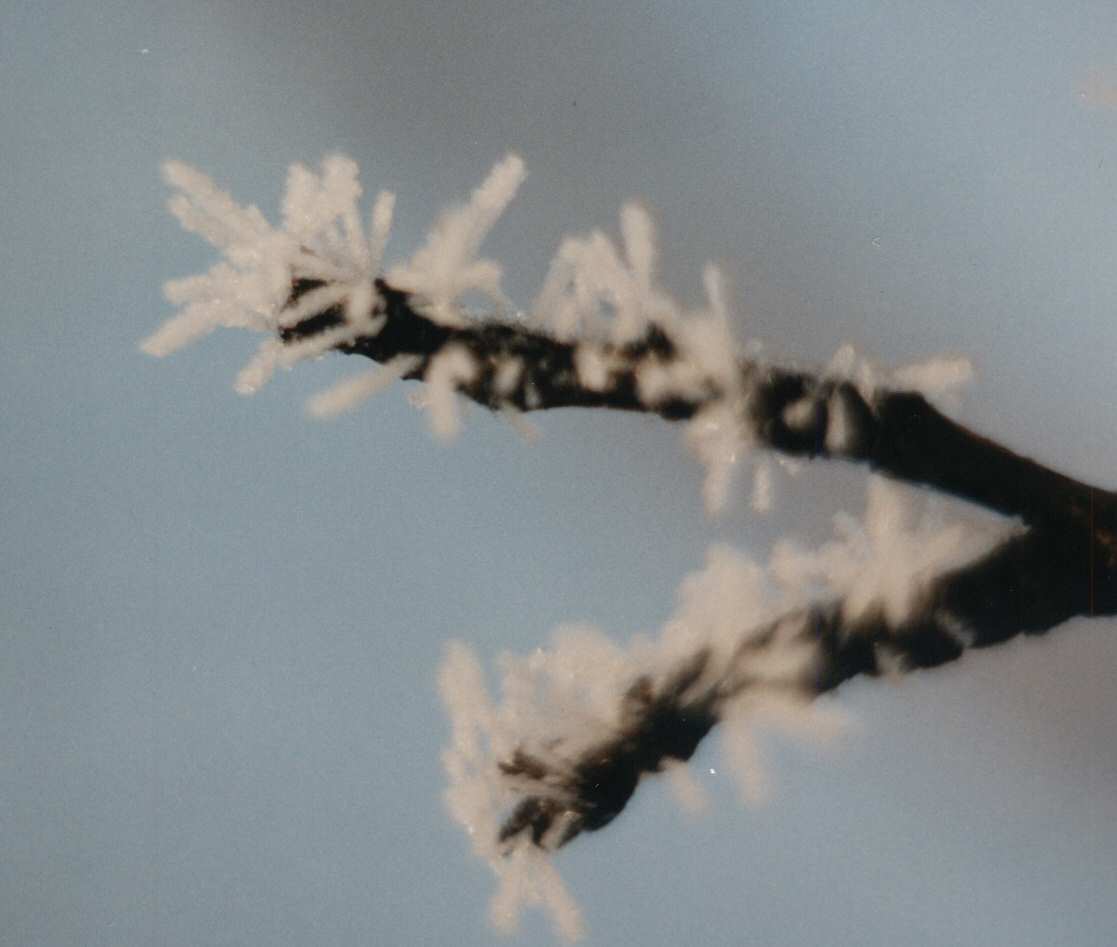 |
| Humid air rising from a warm river on a cold, still morning can form hoar frost on nearby trees and grasses |
Most people know that water condenses during cool nights to create dew, and frost is its winter companion. Shimmering ice crystals form when water vapor in the air attaches to cold solid surfaces, crusting up your lawn and drawing delicate designs on window panes. Have you ever woken up on a cold, clear morning to find the whole world covered in a beautiful white coating of hoar frost? These especially large and beautiful crystals form when water vapor in humid air settles on objects that are well below freezing, turning directly into a solid (a process called "deposition"), or becoming "supercooled" dew droplets that freeze on contact into a lacy silver or white frost.
 |
| A close-up of hoar frost crystals. |
What happens when it's too windy for these fragile crystals to form? You might see hard rime, a milky white ice that forms when fog freezes to objects when it's cold and windy. These crystals build on each other and become shaped by high velocity wind. Glaze ice forms from freezing rain into thicker, more continuous layers, rather than individual frozen droplets. This heavy, dense, clearer ice can be particularly dangerous when it forms on roads, power lines or airplanes.
 |
| When snow crystals in the air collide with water droplets in fog or clouds, they can yield especially interesting rime formations. |
how interesting and scientifically accurate!
ReplyDeletePlease connect me with this photographer. (Ideally he'd also have experience in style and fashion.)
ReplyDeleteGreat info. We have enjoyed these amazing frosts since I was a child.
ReplyDelete